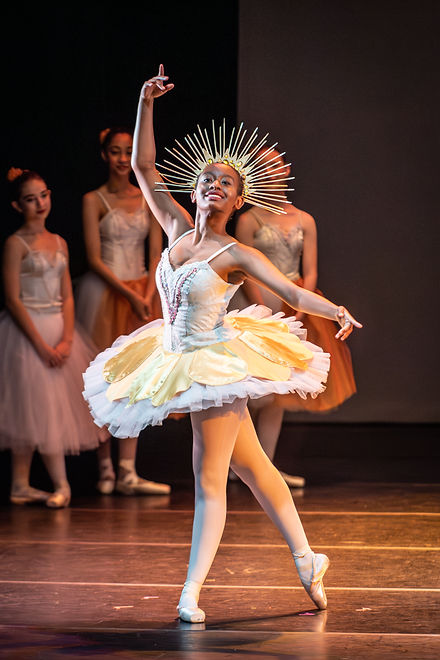Auditions for BBT's Spring Show: Cinderella will be on Saturday, January 24th 2026
Benicia Ballet
While our focus is ballet we offer and encourage participating in a variety of dance styles and conditioning modalities. We are committed to sharing our love of dance in a safe, nurturing environment. Our location includes two spacious dance studios with sprung floors, marley and a fully equipped Pilates studio. We offer multi-class discounts.
Course Descriptions
Parent & Me
This fun and interactive class is designed for young children and their parent or caregiver to enjoy together! Each class includes music, movement, and playful activities that help develop motor skills, coordination, and a love for dance. Parents participate right alongside their child, helping them explore rhythm, balance, and creative movement in a supportive and encouraging environment. No dance experience is necessary—just come ready to move, bond, and have fun!
Ballet 1-6
Students in Ballet 1-6 classes continue to improve skills in coordination, strength, balance, musicality, and dance terminology. Students will need to have completed and shown achievement in their current level in order to be promoted to the next level, or have completed a similar level and technique at a different school. Promotions occur at the instructor's discretion.
Intermediate & Advanced Ballet
Students age 12+ with previous dance experience who have completed prior levels at Benicia Ballet or similar classes at a different school continue to hone their technique in classes specific to their age and abilities. Intermediate and Advanced classes emphasize performance skills and offer challenging technique and repertoire for students which will prepare them for college level or pre-professional dance. Intermediate and advanced pointe is up to the discretion of the instructor.
Contemporary
In the Contemporary dance class, dancers develop modern dance technique, for example articulation of the spine, and movement from upright to the floor and vice versa. The class further explores the complex aspects of expressive dance movement such as effort, force and choreographic forms while often exploring current music genres. The goals are to hone expression through dance
Jazz
Our jazz dance class is a fun, high-energy experience where kids learn upbeat choreography set to popular music. Dancers will build flexibility, coordination, and confidence as they explore classic jazz moves like kicks, turns, and leaps. Each class includes a warm-up, across-the-floor technique, and a lively dance combination. It’s a great way for children to express themselves, stay active, and develop a strong foundation in dance—all while having a great time!
Strength & Stretch
Using a combination of Pilates, Progressing Ballet Technique, Yoga, Physical Therapy exercises and dance technique principles, this unique approach allows the body to find balanced muscular engagement and true physical alignment. This class is intended for everyone who wants to increase their understanding of body mechanics and muscle memory while increasing flexibility. It is intended to be a warm up for the Ballet 7/8/Adult class that follows or as a stand alone workout.
Pre-Ballet & Primary
Our Pre-Ballet and primary classes set foundations for solid technique and give students plenty of room for creative experiments. While learning basic technique students are encouraged to explore musicality and creativity using familiar songs and stories in relation to dance. Students need no prerequisites to enroll in these classes.
Teen/Adult/Ballet Technique
Our Teen/ Adult classes are great classes for beginning teen and adult dancers, as well as for individuals who may have had previous dance experience but have not taken class for a while and who may be looking to get back in shape, or just enjoy dance at an introductory level. These classes are designed to be gentle to bodies which may not have experienced movement or exercise in a while and promote strength, flexibility, and overall good health. Students will learn and review basic ballet technique, and be encouraged to push themselves only within their personal comfort zones. There is no pressure to perform or strain in these classes, only to experience dance as a wonderful tool for personal expression and well being.
Pre Pointe
This class is for dancers who have demonstrated a commitment to training by taking at least 2 ballet classes per week the year and/or two prior to Pre-Pointe, be a minimum age of 9.5 and must be recommended by the Instructor. The focus will be to continue to develop excellent alignment and strong ballet technique alongside beginning an understanding of anatomy and strength needed to safely go en Pointe. Dancers will remain in this class 1 to 3 years.
Tap
Tap dance is a type of dance characterized by using the sounds of tap shoes striking the floor as a form of percussion. The sound is made by shoes that have a metal "tap" on the heel and toe. There are several major variations on tap dance including: flamenco, jazz tap, classical tap, Broadway tap, and Contemporary tap. Broadway tap is rooted in English theatrical tradition and often focuses on formations, choreography and generally less complex rhythms; it is widely performed in musical theatre. Jazz tap focuses on musicality, and practitioners consider themselves to be a part of the jazz tradition. Classical tap has a similarly long tradition which marries European "classical" music with American foot drumming with a wide variation in full-body expression. Contemporary tap has emerged over the last three decades to incorporate abstract expression, thematic narrative and technology.
Acro
Our acro (or tumbling) class combines the strength and flexibility of gymnastics with the grace of dance, giving kids a chance to safely learn fun skills like rolls, handstands, cartwheels, backbends, and more. Each class focuses on building strong technique, body awareness, and control through stretching, conditioning, and skill progressions. Taught in a supportive environment, students learn at their own pace while gaining confidence and having fun. It's the perfect class for energetic kids who love to move, flip, and challenge themselves!




